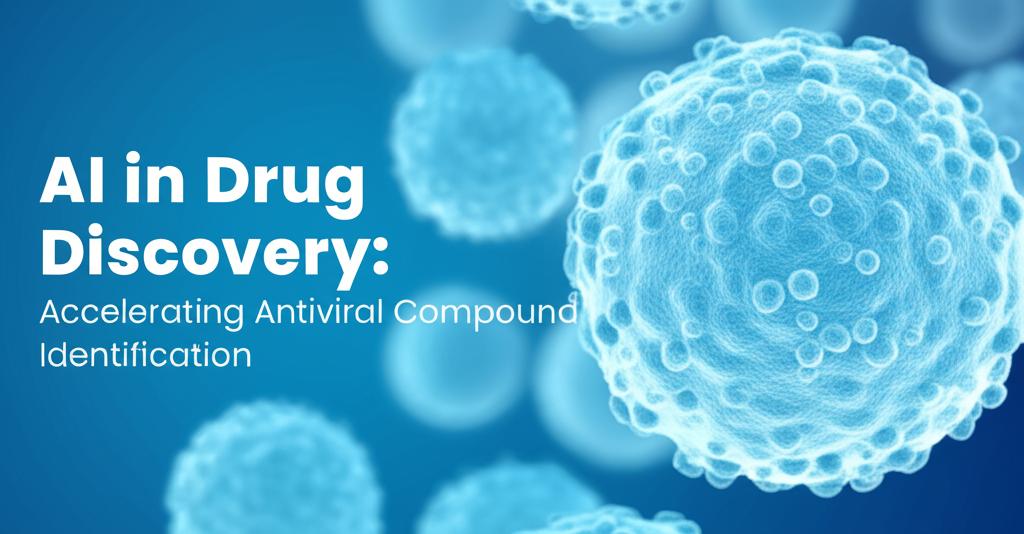The integration of artificial intelligence (AI) is significantly reshaping the landscape of antiviral drug discovery, promising to make the development of new medicines faster, more cost-effective, and more efficient. AI, encompassing machine learning (ML) and deep learning (DL), offers powerful tools for analyzing vast datasets, identifying potential drug candidates, and even predicting viral mutations.
Accelerating Timelines and Enhancing EfficiencyTraditional drug discovery is a notoriously lengthy and expensive process. AI-driven models, however, can dramatically speed this up. For instance, by using AI to analyze molecular structures, researchers can predict how compounds will interact with viral targets, thereby accelerating the identification of promising candidates. This reduces the reliance on extensive and time-consuming trial-and-error laboratory experiments.
Recent breakthroughs highlight this acceleration. In early 2025, Model Medicines announced that its generative AI platform, GALILEO™, successfully identified 12 highly specific antiviral compounds targeting viral RNA polymerases from an initial pool of 52 trillion molecules. Remarkably, all 12 compounds demonstrated antiviral activity in vitro against Hepatitis C Virus (HCV) and/or human Coronavirus 229E, achieving a 100% hit rate. Similarly, researchers at the University of Pennsylvania's Perelman School of Medicine developed an AI technique that, using an initial dataset of just 36 small molecules, identified potential antiviral drug compounds against human enterovirus 71 (EV71). Their AI-selected shortlist yielded a significantly higher success rate in lab experiments compared to traditional screening methods, potentially condensing months of work into days.
Pfizer has also demonstrated the power of AI, leveraging it to develop the COVID-19 vaccine and an oral antiviral treatment in record time. Their use of AI in modeling and simulation allowed them to screen over a million protease inhibitor compounds efficiently.
Key AI Techniques and ApplicationsSeveral AI methodologies are proving instrumental in antiviral compound identification:
- Machine Learning (ML) and Deep Learning (DL): These are used to analyze complex biological and chemical data, predict molecular interactions, and identify patterns that humans might miss. Deep neural networks can be trained on biomedical assay data to predict and prioritize compounds for in vitro testing.
- Generative AI: This technology can design novel drug candidates with desired properties. Platforms like Model Medicines' GALILEO™ use generative AI to expand chemical space and identify structurally novel antiviral candidates. Generative Adversarial Networks (GANs) are a subset of generative AI models used to simulate complex biological techniques.
- Natural Language Processing (NLP): NLP algorithms can extract relevant information from scientific literature and databases, guiding researchers toward pertinent data for drug development.
- AI-driven High-Throughput Screening: AI enhances the efficiency of screening vast libraries of chemical compounds to identify those with antiviral activity.
- Foundation Models: These are large AI models trained on extensive biological datasets. They have the potential to uncover new genetic patterns, understand mechanisms of action, and predict therapeutic targets. Models like AlphaFold for protein structure prediction are early examples of this approach.
- AI Agents in Bioinformatics: AI agents are being integrated into bioinformatics tools, simplifying complex data analysis tasks like RNA-seq analysis and making advanced informatics accessible to a broader range of researchers.
Despite the significant progress, challenges remain. The quality and availability of data for training AI models are crucial. Ensuring data privacy, addressing ethical concerns, navigating regulatory hurdles, and fostering interdisciplinary collaboration are also vital for the successful integration of AI in drug discovery.
The future of AI in antiviral drug discovery looks bright. The convergence of generative AI with other advanced technologies like quantum computing is anticipated to further revolutionize the field. Quantum-enhanced pipelines are already showing promise in tackling complex molecular design problems. As AI models become more sophisticated and datasets grow, the ability to rapidly identify and develop novel antiviral compounds, including broad-spectrum antivirals and personalized medicines tailored to individual genetic profiles, will continue to improve. This is particularly important for responding to new viral threats and addressing a-major-challenge-in-antiviral-drug-development-is-viral-mutation.
Companies like Model Medicines are focusing on "one-shot" AI predictions, where models can identify novel chemical entities with desired biological activity using minimal training data, achieving high success rates in subsequent lab validation. This "one-shot" approach significantly reduces the time and cost associated with traditional discovery methods. Furthermore, initiatives like ViroMME by Model Medicines aim to utilize AI-based drug discovery platforms to combat a range of infectious diseases with a pipeline of novel compounds.
The development of AI-driven tools that can repurpose existing drugs for new antiviral uses is also a significant area of advancement. This was evident during the COVID-19 pandemic, where AI models quickly identified existing drugs as potential treatments.
In conclusion, AI is not just an auxiliary tool but a transformative force in antiviral drug discovery. By leveraging AI's ability to rapidly analyze complex data, predict molecular interactions, and generate novel drug candidates, scientists are poised to accelerate the pipeline for new antiviral therapies, offering hope for combating existing and emerging viral diseases more effectively. The year 2025 is being marked as an inflection point where hybrid AI-driven and quantum-enhanced drug discovery methods are becoming increasingly central to the field.

